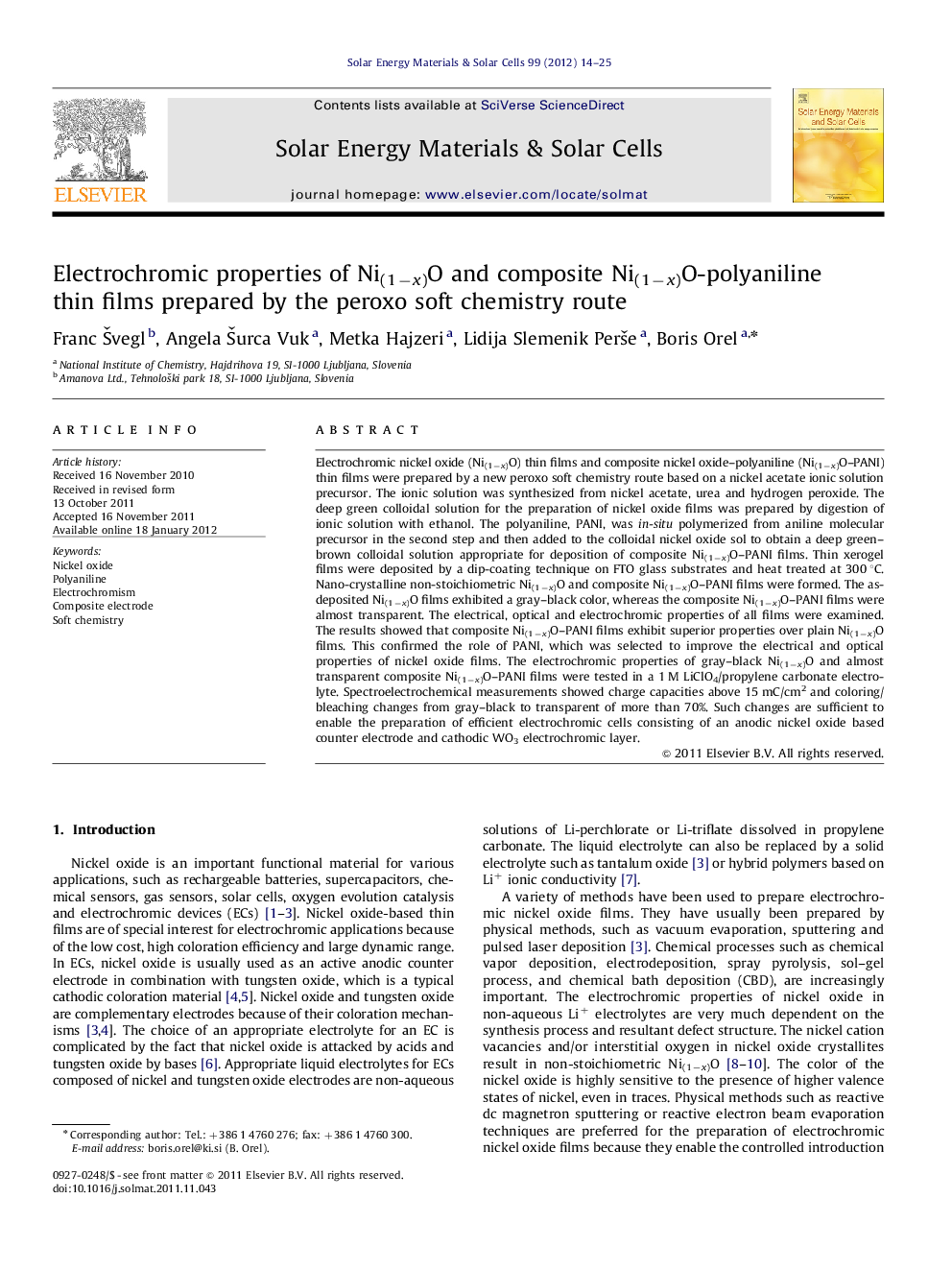| Article ID | Journal | Published Year | Pages | File Type |
|---|---|---|---|---|
| 78991 | Solar Energy Materials and Solar Cells | 2012 | 12 Pages |
Electrochromic nickel oxide (Ni(1−x)O) thin films and composite nickel oxide–polyaniline (Ni(1−x)O–PANI) thin films were prepared by a new peroxo soft chemistry route based on a nickel acetate ionic solution precursor. The ionic solution was synthesized from nickel acetate, urea and hydrogen peroxide. The deep green colloidal solution for the preparation of nickel oxide films was prepared by digestion of ionic solution with ethanol. The polyaniline, PANI, was in-situ polymerized from aniline molecular precursor in the second step and then added to the colloidal nickel oxide sol to obtain a deep green–brown colloidal solution appropriate for deposition of composite Ni(1−x)O–PANI films. Thin xerogel films were deposited by a dip-coating technique on FTO glass substrates and heat treated at 300 °C. Nano-crystalline non-stoichiometric Ni(1−x)O and composite Ni(1−x)O–PANI films were formed. The as-deposited Ni(1−x)O films exhibited a gray–black color, whereas the composite Ni(1−x)O–PANI films were almost transparent. The electrical, optical and electrochromic properties of all films were examined. The results showed that composite Ni(1−x)O–PANI films exhibit superior properties over plain Ni(1−x)O films. This confirmed the role of PANI, which was selected to improve the electrical and optical properties of nickel oxide films. The electrochromic properties of gray–black Ni(1−x)O and almost transparent composite Ni(1−x)O–PANI films were tested in a 1 M LiClO4/propylene carbonate electrolyte. Spectroelectrochemical measurements showed charge capacities above 15 mC/cm2 and coloring/bleaching changes from gray–black to transparent of more than 70%. Such changes are sufficient to enable the preparation of efficient electrochromic cells consisting of an anodic nickel oxide based counter electrode and cathodic WO3 electrochromic layer.
► Electrochromic Ni(1−x)O and composite Ni(1−x)O-polyaniline films were prepared. ► Gray–black color characterize the substechiometric nature of initial films. ► Direct cycling in aprotic electrolytes is possible (no alkaline pretreatment). ► Ex-situ IR spectra revealed structural changes of colored/bleached films. ► Photopic transmittance variation was >65%, coloration efficiency up to 40 cm2/C.
